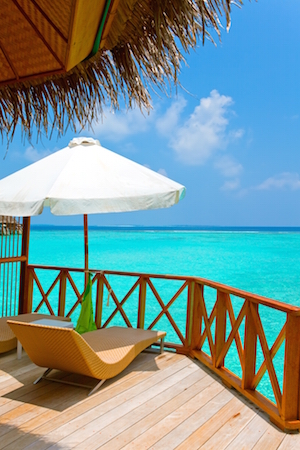 Aussie families heading overseas for some winter sun are being urged to protect themselves with travel insurance, as comparethemarket.com.au reveals that some of our favourite destinations are breeding grounds for tummy trouble-causing bacteria and other nasties.
Aussie families heading overseas for some winter sun are being urged to protect themselves with travel insurance, as comparethemarket.com.au reveals that some of our favourite destinations are breeding grounds for tummy trouble-causing bacteria and other nasties.
The popular comparison website – that features 29 travel insurance brands – sourced feedback from InsureandGo on the most common conditions that people claim for when travelling. Gastroenteritis, otherwise known as Bali belly or the Thailand trots, tops the list with Aussie’s adventurous tastes and carefree attitude often to blame.
Abigail Koch, spokesperson at comparethemarket.com.au said: “It’s great that Australians want to try the local cuisine when abroad, but it’s important to exercise some caution when choosing what to sample. Chargrilled rat and deep-fried tarantula might seem like a fun idea at the time but often our stomachs can’t handle the same bacteria that locals have a tolerance against. A bad bout of gastro can quickly ruin a holiday, leaving you holed-up in bed or even hospitalised.”
She adds: “Basic cover for two adults and two kids heading to Bali can cost as little as $70 for a week, which is an insignificant hit to the pocket when compared to hospital rates of $800 per day and this amount doesn’t even include specialist consultations or any medications or procedures.”
Abigail adds: “Australians should in no way be deterred from travelling, when armed with a little local know-how many of the pitfalls that lead to someone falling ill can easily be avoided.”
Comparethemarket.com.au reveals some of the top holiday hotspots for potential health issues and offers some general advice to travellers intending to visit these destinations.
1. Bali – It’s not hard to understand why the ‘Paradise Island’ is the number one destination for Aussies heading abroad, but it also takes out the top spot for troubled tummies.
Abigail says: The notorious ‘Bali Belly’ is easy to pick up and hard to shake off, with 50 per cent of travellers reporting some kind of stomach upset while on the island. Drinking tap water is the most common way to be struck down with a case of the runs. Skip ice cubes in your drink, pass on salads or other raw foods, and only drink bottled water, with the seal intact.
2. Thailand – Known for its tropical beaches, ornate palaces and ancient ruins, Thailand has it all; including a potentially hefty dose of fungal skin infections.
Abigail says: Make sure all of the family wears thongs when using communal areas. Athlete’s foot can easily spread from person to person and can be rife in shared beach resort showers, changing areas and swimming pools. Some treatments are available from a pharmacy, but if your infection covers a large area or your nails or scalp, then you should head to a nearby medical centre and obtain a prescription for stronger medication.
3. Fiji – Famed for its blue lagoons, Fiji might be the perfect family holiday destination, but it is also home to a number of mosquito-borne illnesses, including dengue fever.
Abigail says: Mosquitoes are annoying but they can also be dangerous. Make sure you take precautions against being bitten. Insect repellent is crucial, particularly for kids, who often are having too much fun to realise that they’re being feasted on by swarms of hungry mozzies. If you do develop a fever or other flu-like symptoms, then head straight to a doctor. There is no treatment or vaccine for dengue fever, but early diagnosis and management of your symptoms is critical to reduce the risk of complications and further spread of the virus.
4. Philippines – A beautiful country, but while you’re soaking up the culture, try and steer clear of the contagious influenza virus.
Abigail says: Influenza is prevalent in South-East Asia during the rainy season. Even though you can catch the flu in Australia, coming down with it when you’re away from home can completely ruin your holiday and be a frightening experience. Avoid aching joints, sore muscles and a fever by looking into flu vaccines every year, especially if you’re planning to travel with young kids.
5. Spain – We all know Spain tops the list for flamenco music, sangria and paella, but did you know it’s also number one for cases of food poisoning?
Abigail says: A recent survey found that Spain has the highest rate of food poisoning in the world. When you’re weighing up the best places to pig out on paella or chow down on churros, make sure you choose popular restaurants that have received positive reviews online. Ensure any food you eat is piping hot and well cooked through. Spain is renowned for its seafood, but make sure you choose fish and shellfish carefully. Uncooked seafood is a leading culprit in food poisonings during international travel.



















